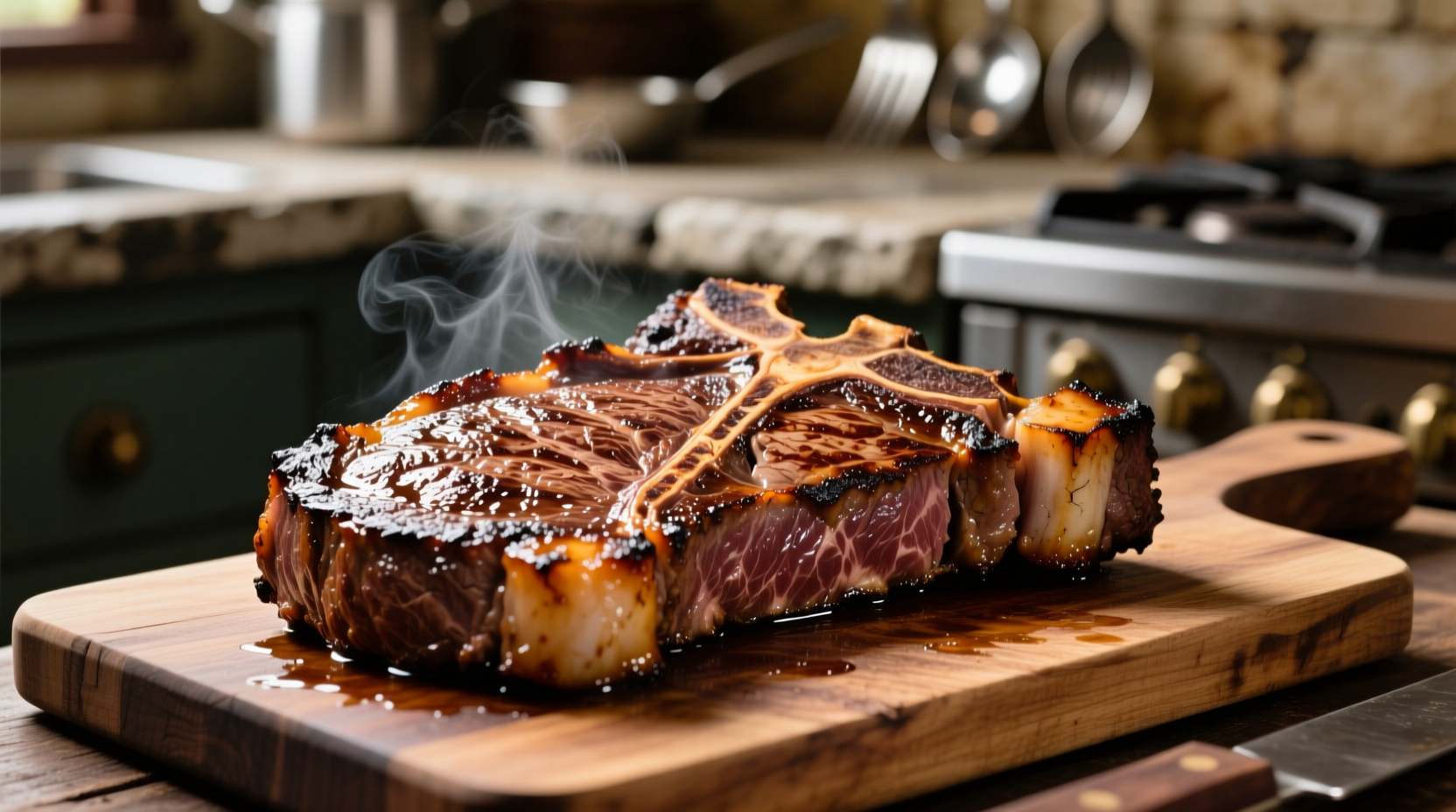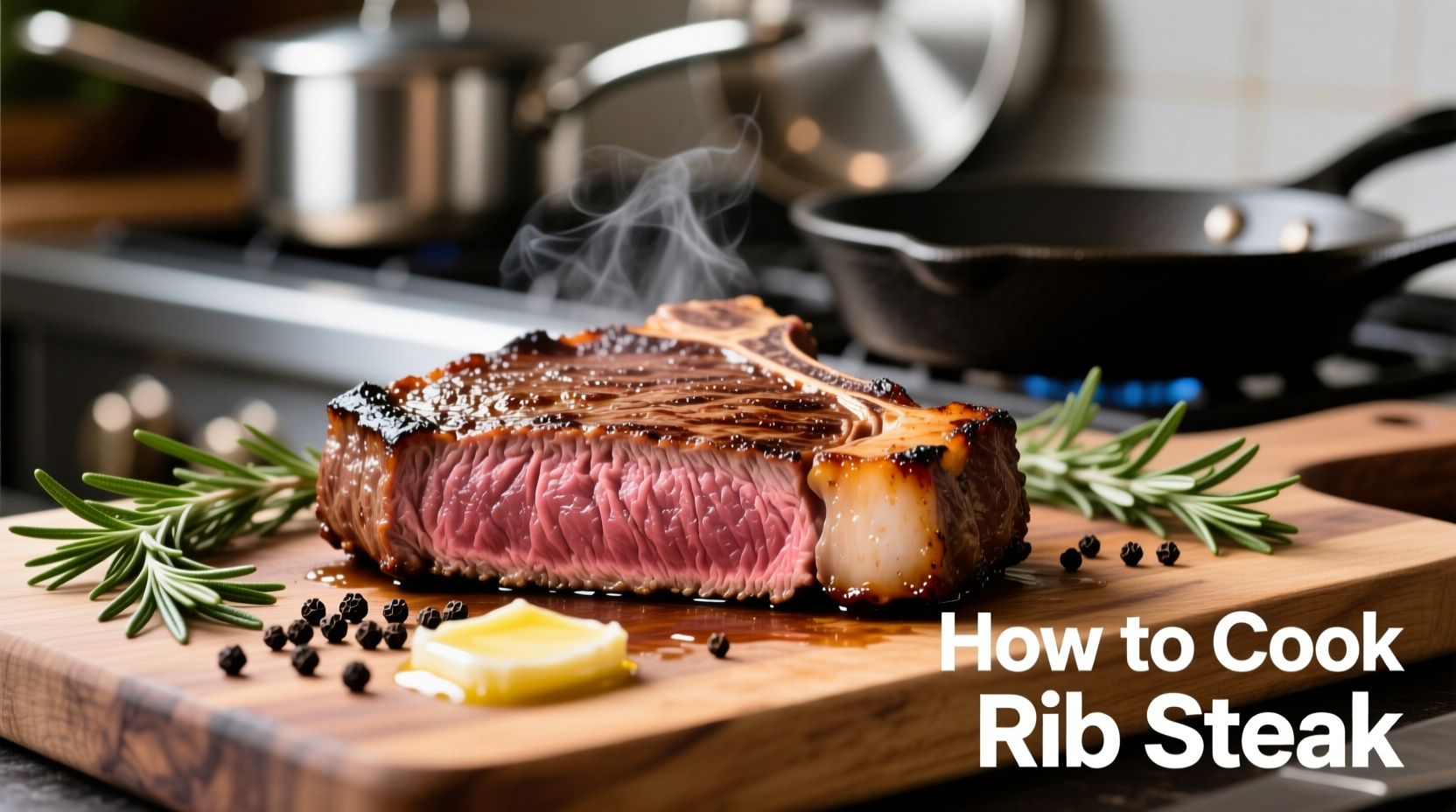Perfectly cooked rib steak features a flavorful crust, juicy interior, and optimal tenderness. Achieve restaurant-quality results at home by bringing steak to room temperature (30-60 minutes), seasoning generously with coarse salt, searing at 450°F (232°C) for 3-4 minutes per side, then finishing in oven to desired internal temperature (120-130°F for medium-rare). Rest 10 minutes before slicing against the grain for maximum juiciness.
The Ultimate Guide to Cooking Rib Steak Like a Professional
There's nothing quite like a perfectly cooked rib steak—tender, juicy, and bursting with rich beefy flavor. As a cut prized for its marbling and tenderness, rib steak (also known as ribeye) deserves careful preparation to maximize its potential. Whether you're cooking for a special occasion or simply treating yourself to a premium meal, this comprehensive guide delivers professional techniques you can implement in your home kitchen.
Why Rib Steak Deserves Special Attention
Rib steak comes from the rib section of the cow (ribs 6-12), containing the longissimus dorsi muscle that's minimally worked during the animal's life. This results in exceptional tenderness and rich marbling—the intramuscular fat that melts during cooking, basting the meat from within. Unlike leaner cuts, rib steak's fat content requires specific cooking approaches to render properly without drying out the meat.
Selecting the Perfect Rib Steak
Your cooking journey begins at the butcher counter. Look for these quality indicators:
- Marbling: Abundant white fat streaks throughout the muscle (USDA Prime grade offers the most)
- Color: Bright cherry red (avoid brownish hues indicating age)
- Thickness: Minimum 1.5 inches for proper searing without overcooking
- Aging: Choice between wet-aged (convenient) or dry-aged (more complex flavor)
| Cooking Method | Best For Thickness | Temperature Range | Recommended Doneness |
|---|---|---|---|
| Cast Iron Pan + Oven | 1.5-2 inches | 450°F sear, 375°F finish | Medium-rare to medium |
| Grill (Two-Zone) | 1.25-2 inches | 500°F direct, 350°F indirect | Medium-rare |
| Sous Vide + Sear | Any thickness | 129°F water, 500°F sear | Precise doneness control |
Essential Preparation Steps
Skipping proper preparation guarantees subpar results. Follow these critical steps:
1. Temperature Equilibration
Remove steak from refrigerator 30-60 minutes before cooking. This critical step ensures even cooking—starting with a cold steak creates a significant temperature gradient, resulting in overcooked exteriors before the center reaches desired doneness. The USDA Food Safety and Inspection Service confirms that brief room temperature exposure (under 2 hours) poses no food safety risk for cooked meats.
2. Proper Drying
Pat the steak thoroughly dry with paper towels. Moisture on the surface prevents proper searing—water boils at 212°F (100°C) while the Maillard reaction (browning) requires at least 300°F (149°C). For exceptional results, place uncovered on a wire rack in the refrigerator for 1-2 hours before cooking to further dry the surface.
3. Strategic Seasoning
Generously apply coarse kosher salt (about 1 tsp per pound) at least 45 minutes before cooking. This allows time for salt to penetrate, enhancing flavor throughout rather than just on the surface. Add freshly ground black pepper just before cooking to prevent burning. Avoid complex spice blends that mask the steak's natural flavor—rib steak shines with minimal seasoning.
The Perfect Cooking Process
Follow this professional technique for optimal results:
Step 1: High-Heat Searing
Heat a heavy cast-iron skillet or stainless steel pan over medium-high heat until smoking hot (about 5 minutes). Add high-smoke point oil (avocado or grapeseed) just before adding steak. Place steak in pan and resist moving it for 3-4 minutes to develop an even crust. The American Meat Science Association confirms that proper searing creates complex flavor compounds through the Maillard reaction without sealing in juices as commonly believed.

Step 2: Butter Basting Technique
After flipping the steak, add 2 tbsp butter, 2 crushed garlic cloves, and fresh rosemary or thyme to the pan. Tilt the pan and spoon the melted butter continuously over the steak for 2-3 minutes. This infuses additional flavor while gently cooking the edges.
Step 3: Oven Finishing (For Thicker Cuts)
For steaks thicker than 1.5 inches, transfer the skillet to a preheated 375°F (190°C) oven until reaching desired internal temperature. This gentle approach prevents an overcooked exterior while ensuring proper doneness throughout.
Step 4: Temperature Monitoring
Use an instant-read thermometer for accuracy. Insert horizontally into the thickest part, avoiding fat pockets. Follow this temperature guide:
| Doneness | Internal Temperature | Visual Characteristics | Resting Time |
|---|---|---|---|
| Rare | 120-125°F (49-52°C) | Very red center, cool | 5-7 minutes |
| Medium-rare | 125-130°F (52-54°C) | Warm red center | 8-10 minutes |
| Medium | 135-140°F (57-60°C) | Pink center | 10-12 minutes |
| Medium-well | 145-150°F (63-66°C) | Slightly pink center | 12-15 minutes |
Step 5: The Critical Resting Period
Transfer steak to a cutting board and tent loosely with foil for 8-12 minutes (10 minutes for 1.5" steak). This allows juices to redistribute—cutting too soon releases precious moisture onto the plate rather than staying in the meat. The internal temperature will continue rising 5-10°F during this time (carryover cooking).
Avoiding Common Rib Steak Mistakes
Even experienced cooks make these critical errors:
- Overcrowding the pan: Causes steaming instead of searing—cook one steak at a time if necessary
- Frequent flipping: Prevents proper crust formation—flip only once during searing
- Cutting too soon: Releases juices—always rest before slicing
- Using low smoke-point oils: Creates bitter flavors—choose avocado, grapeseed, or clarified butter
- Ignoring carryover cooking: Results in overcooked steak—remove 5°F below target temperature
Serving Your Perfect Rib Steak
Slice against the grain (perpendicular to muscle fibers) in 1/2-inch thick pieces for maximum tenderness. For premium presentation, arrange slices slightly overlapping on a warm plate. Classic accompaniments include:
- Simple compound butter (herbs + softened butter)
- Roasted garlic mashed potatoes
- Sautéed mushrooms with thyme
- Grilled asparagus with lemon zest
For special occasions, consider finishing with a drizzle of high-quality finishing salt or a red wine reduction sauce—but remember that exceptional rib steak often needs little more than salt, pepper, and proper cooking technique.











 浙公网安备
33010002000092号
浙公网安备
33010002000092号 浙B2-20120091-4
浙B2-20120091-4